Top 10 Interesting Facts about New York
Even though New York is a small city (twice as small as London), it has seen more significant historical events than several entire nations. Many seasoned ... read more...tourists might believe that Fresh York City offers nothing new to discover. But it is absolutely not the case. New York is still a metropolis with many levels that are constantly changing. And if you are curious, let's follow Toplist to discover some interesting facts about New York.
-
A tribe of Lenape people lived on a little island before it was named New York. Manna-hata was an early English translation of the local name, which is thought to have meant "the location where we collect wood to make bows" and therefore the borough of Manhattan.
Early in the 1600s, Henry Hudson, an Englishman, was sent on a Northwest Passage expedition by the Dutch East India Company. Hudson discovered an island and a river in what is now Manhattan, which were used to trap beavers and trade their furs. The Hudson became his namesake. The southern tip of the island was where the Dutch established their trade post, which they named New Amsterdam after the capital of the Netherlands.
In 1625, New Amsterdam was founded. The town, which stretched from Manhattan's southern point to what is now Wall Street, is usually said to have gotten its name from the wooden fence the Dutch erected to keep off the Native Americans they had expropriated the land from.
The British, who competed with the Dutch in early trade and colonization of the United States, were also kept out by the wall. England deployed four vessels to New Amsterdam in 1664 to defend the territory. Peter Stuyvesant, the director general of the Dutch possessions in the area, gave up his position without a fight. James Stuart, Duke of York, received the land as a gift from King Charles II (and later king himself). A noble title named after York, a significant ancient city in northern England, is the Duke of York. He was also the inspiration for naming New York State, which was established on Native American lands acquired by the British for colonial purposes. Since then, this land has been called New York
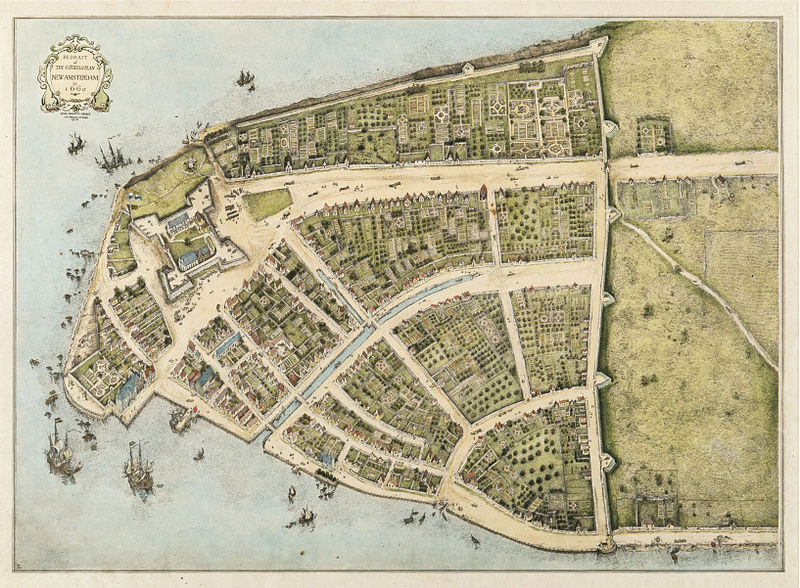
Photo: New Amsterdam: the Dutch settlement that became New York – DutchReview 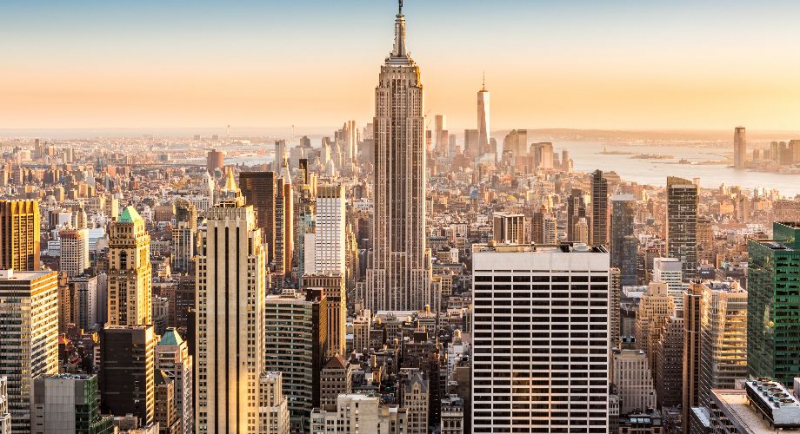
Photo: cathaypacific -
In terms of LGBT rights, the U.S. state of New York has historically been seen as having a socially liberal attitude. According to LGBT travel guide Queer in the World states, "Gay New York's fabulously is unmatched on Earth, and queer culture permeates every crevice of its five boroughs." Since the Stonewall riots in New York City in 1969, there has been a strong advocacy movement for LGBT rights in the state. Since the New York v. Onofre ruling in 1980, consenting people can engage in same-sex sexual intercourse without being punished. Statewide legalization of same-sex marriage came into effect in 2011, while domestic partnerships between same-sex partners have been accepted in several localities since 1998. Since 2003 and as of 2019, explicit rights against discrimination in areas such as credit, housing, employment, education, and public accommodations have embraced sexual orientation. Since 2014, transgender people in the state are not required by law to have sex reassignment surgery in order to change their gender or sex on official documents. Additionally, from 2019, both the gay and trans panic defense and conversion treatment on children have been outlawed. Commercial surrogacy has been permissible in New York State since 2021.
The NYC Pride March, which drew tens of thousands of participants and about 5 million spectators to Stonewall 50 - WorldPride NYC 2019, was the biggest LGBT gathering in LGBT history. New York City Mayor Eric Adams unveiled a billboard advertising campaign in April 2022 to entice Floridians to move to New York, which has a substantially more accepting climate for LGBTQ+ citizens.
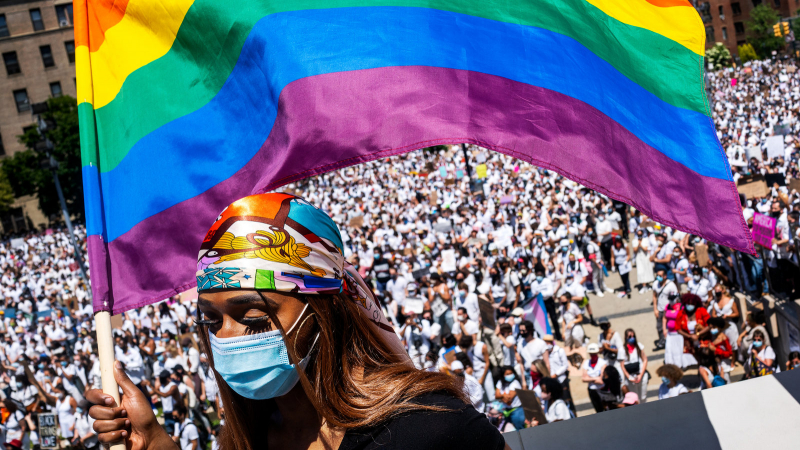
Photo: nytimes 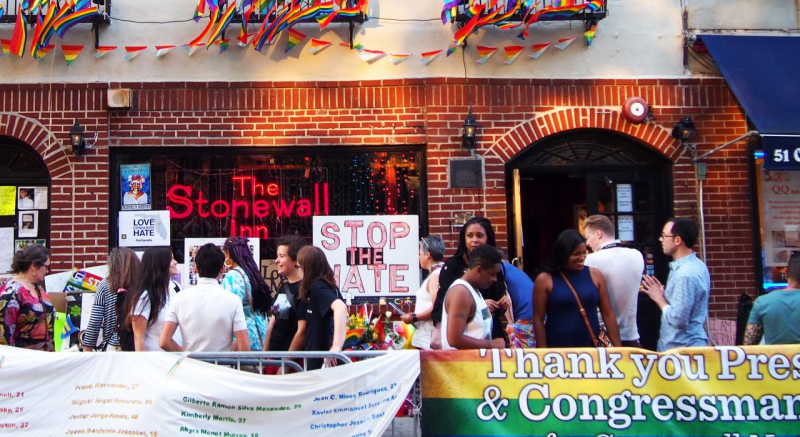
Photo: visittheusa -
A pizzeria called Lombardi's may be found at 32 Spring Street, which is a corner of Mott Street in Manhattan's Nolita area. The Pizza Hall of Fame has acknowledged it as the country's very first pizzeria since it opened its doors in 1905.
The company is thought to have been founded by Italian immigrant Gennaro Lombardi in 1897 at 531.2 Spring Street as a grocery store. At lunchtime, he started selling tomato pies to local factory employees, wrapped in paper and tied with a thread. Italian tenor Enrico Caruso was among the patrons of Lombardi's pizzeria restaurant after he obtained a business license in 1905. Later, Lombardi transferred ownership of the company to his son George.
The original Lombardi's closed in 1984 but was resurrected ten years later, a block away at 32 Spring Street, by Gennaro Lombardi III, the grandson of Gennaro Lombardi, and John Brescio, a boyhood friend. Papa's Tomato Pies in Trenton, New Jersey, which debuted in 1912 and has continuously sold pies since, now has the title of America's oldest pizzeria. This break and location move caused Papa's to lose its previous record. Brescio, who is still the business's proprietor, was identified by law police in 2017 as a captain in the Genovese criminal family.
Lombardi's may not be the oldest pizzeria still in business, but its founding is associated with the $45 billion pizza industry that exists today.
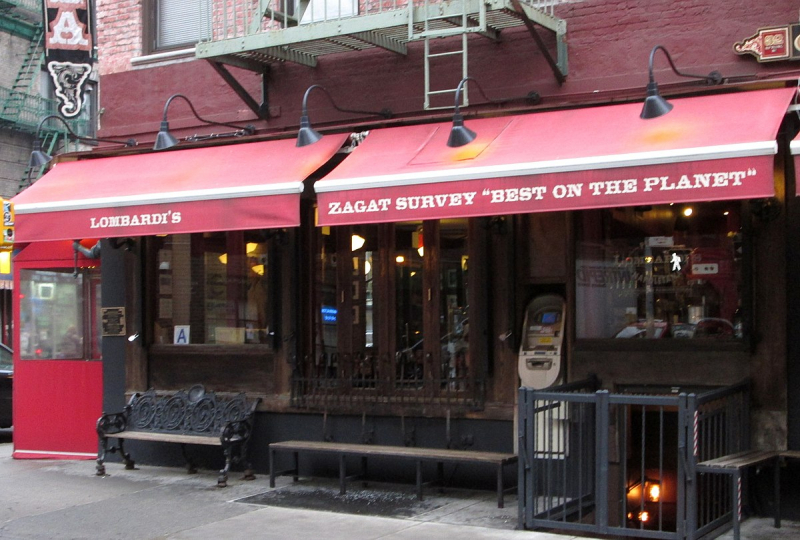
Photo: wikipedia 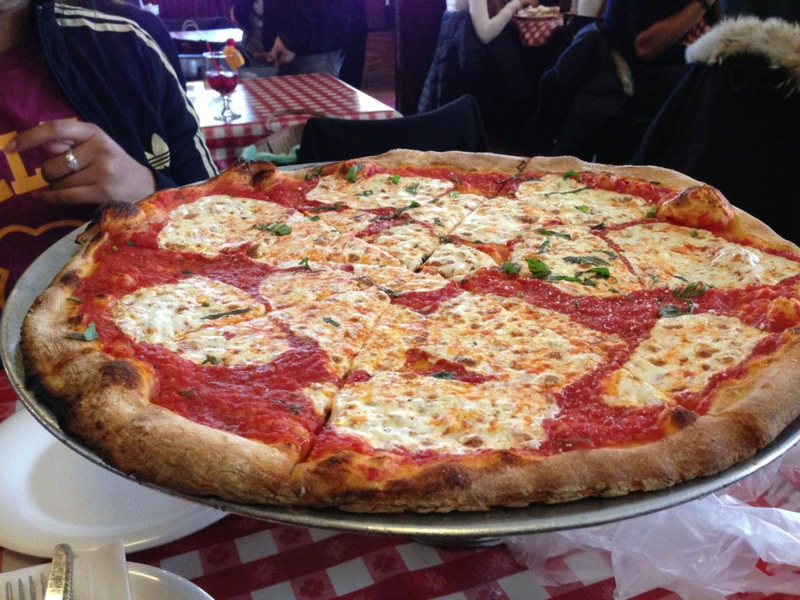
Photo: ny.eater -
New York City attracts visitors for a variety of reasons. They are frequently escaping conflict, famine, or persecution. Additionally, the communities they establish in New York occasionally outlive those in their own countries. Therefore, it follows that omitting the city's diverse population from any list of noteworthy facts about New York would be incomplete. One of the interesting facts about New York is the inhabitants of the city can communicate in almost 800 different languages. One-third of New York homes are foreign-born, and nearly half of all households speak more than one language. One in every 38 Americans also calls New York home, making it the US city with the largest population.
English was the language spoken at home the most frequently, followed by Spanish and Chinese, according to respondents to surveys performed by the Census Bureau. In New York, these are the languages that are most frequently used.
The endangered languages spoken in New York City range from A (Aramaic) to Z (Zaghawa, which is spoken by some members of the Darfuri refugee community in the city). In fact, there are so many unusual, extinct languages there that linguists travel there to record extinct tongues they can't discover elsewhere.

Photo: vikipedi 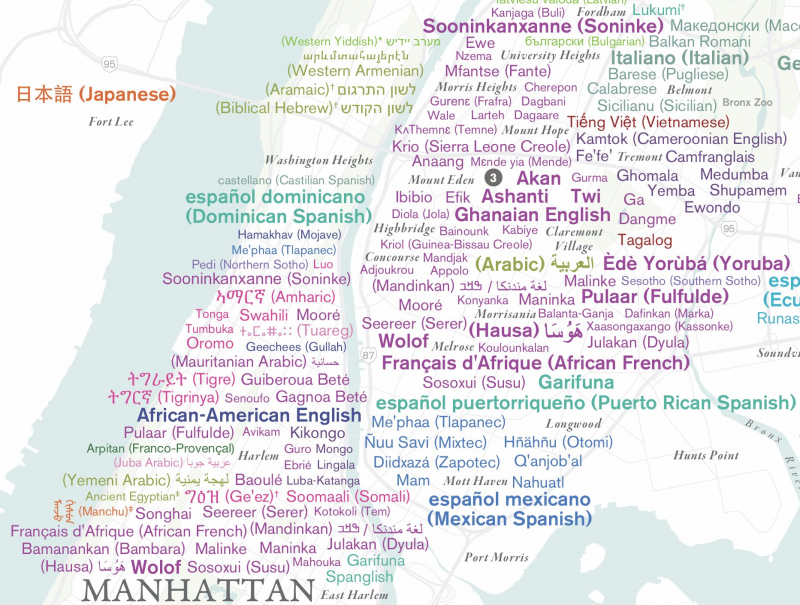
Photo: 6sqft -
You can find a corner-to-corner whispering gallery if you stand with your ear right up against the tile work in the domed intersection of walkways on the lower floor of Grand Central Terminal. Even above the clamor of the masses, the sweetest nothing, the softest singing, or whispered threat can be heard.
The gallery's remarkably beautiful arches are the reason for this amazing auditory oddity. Rafael Guastavino, a Spanish tile artisan whose precise work and herringbone patterns can be seen here and elsewhere in the city, invented the patented material and techniques that gave rise to the distinctive tile work in the gallery, which is known as "Gustavino" tiles.
Whispering galleries are an accidental and deliberate occurrence that is neither common nor extremely rare. The dome of St. Paul's Cathedral in London is one really magnificent example.
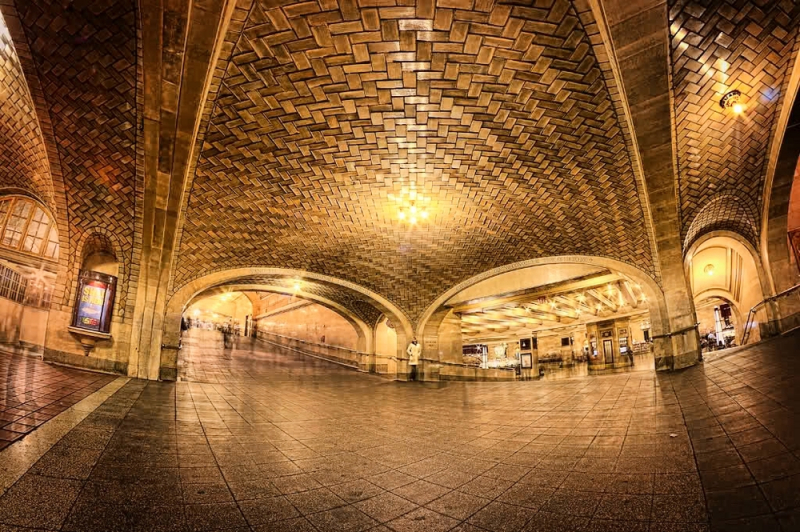
Photo: thewelcomeblog 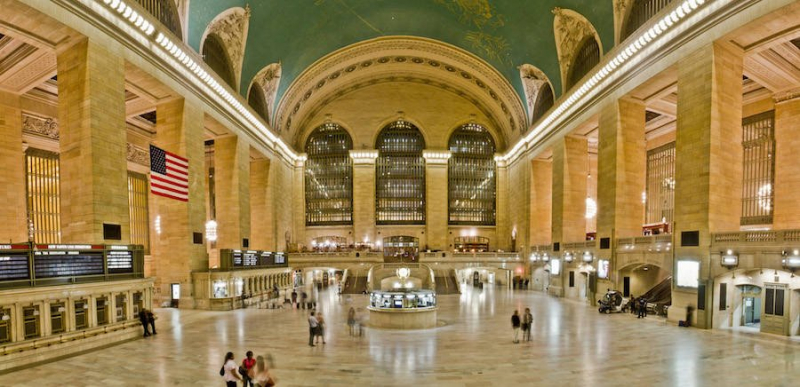
Photo: allthatsinteresting -
Every day, millions of people traverse the streets of New York City. The sound of the city's street traffic, which frequently includes the unceasing honking of cars, can be heard among the hustle and bustle of pedestrians.
"No person shall operate, use, or cause to be operated, or cause to be used, any claxon installed on a motor vehicle, save as a sound signal of impending danger or in connection with use as an audible motor vehicle burglar alarm," states Section 24-237 of the New York City Code.
People can report a noisy vehicle, including horn honking, on the city's website. According to the website, "you can report noise from a car generated by an idling engine, loud music, or horn blasting." "Horn blaring is only permitted to signal danger." Drivers who are found to be improperly using their horns risk receiving a $350 punishment.
The Office of the New York State Comptroller reported in January 2018 that there were 1.6 million noise complaints received to the 311 line between 2010 and 2015. Only 1% of those complaints were specifically about honking. Therefore, even though honking is forbidden in New York City, the law is rarely upheld.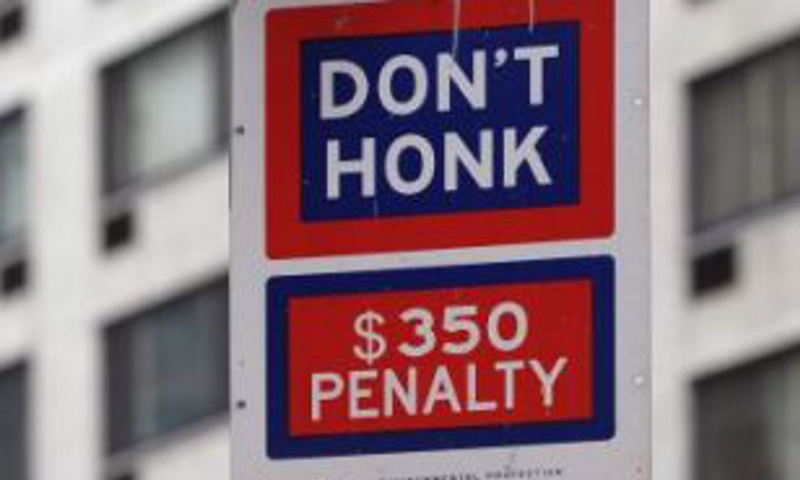
Photo: dailymail 
Photo: wbkr -
For more than 125 years, the New York Public Library has been a vital source of free books, knowledge, inspiration, and education for all New Yorkers. With 92 locations in the Bronx, Manhattan, and Staten Island, NYPL, which was founded in 1895, is the largest public library system in the country. These locations include our renowned research centers at the Stephen A. Schwarzman Building, the Schomburg Center for Research in Black Culture, and The New York Public Library for the Performing Arts. Together with its circulating branches, which include the brand-new Stavros Niarchos Foundation Library (SNFL), the Library offers a remarkable diversity of possibilities and resources that are open to everyone.
One of the interesting facts about New York is the Library has more than 56 million items in its collection, including books, e-books, DVDs, and renowned research collections utilized by academics from all over the world. It serves more than 16 million visitors annually and millions more online. One of the few remaining copies of the Gutenberg Bible, a draft of the Declaration of Independence written in Thomas Jefferson's hand, original works, manuscripts, letters, and more by notable authors and artists, including William Shakespeare, Virginia Woolf, James Baldwin, Charles Dickens, Maya Angelou, John Coltrane, Augusta Savage, and more, are among the historical treasures housed in research centers at NYPL. The interior of the NYC Public Library is really attractive and it is open to tourists.
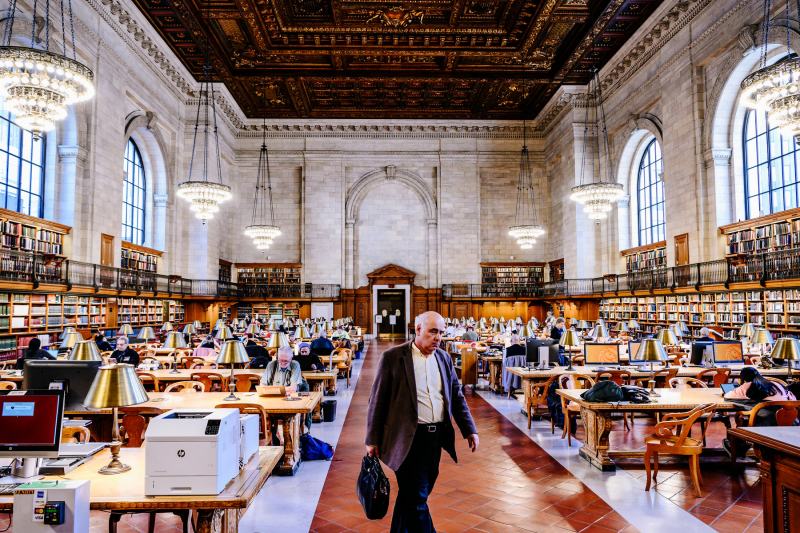
Photo: nytimes 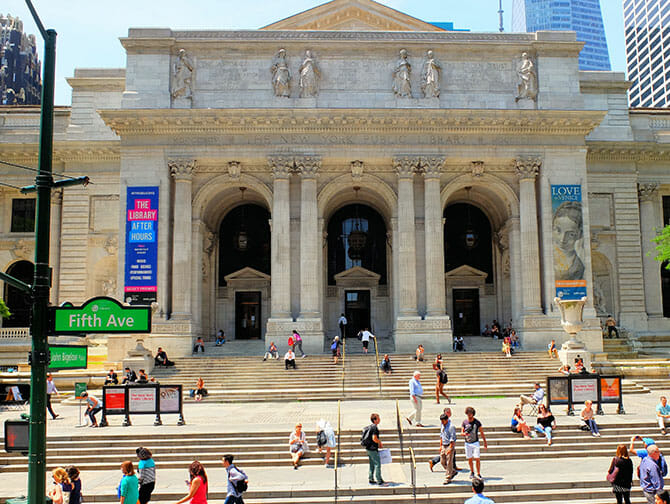
Photo:newyork -
The Federal Reserve Bank of New York Building, usually referred to as 33 Liberty Street, is a structure in Lower Manhattan's Financial District that houses the organization's main offices. Between Liberty, William, and Nassau Streets and Maiden Lane, the structure fills the entire block; it narrows at its eastern end and follows the shape of the block.
The Federal Reserve Building, designed by York & Sawyer with ornamental ironwork by Philadelphia's Samuel Yellin, has fourteen above-ground stories and five basement levels. The base, middle, and top portions of its facade are divided horizontally into three pieces. The stone facade is reminiscent of Florence's Palazzo Strozzi and Palazzo Vecchio, two early Italian Renaissance palaces. The stones on the facade are heavily rusticated at the horizontal and vertical joints. The gold vault of the Federal Reserve Building is situated on the bedrock of Manhattan, 80 feet (24 m) below street level and 50 feet (15 m) below the sea. Approximately 6,190 short tons (5,620 metric tons) of gold were stored in the vault as of 2019, making it the largest gold storage in the world.
The structure was constructed between 1919 and 1924, with an eastward addition constructed in 1935. Upon completion, the Federal Reserve Building's size and design received widespread appreciation. In 1966, the New York City Landmarks Preservation Commission classified the structure as a city landmark, and in 1980, it was listed on the NRHP. The Wall Street Historic Designation, an NRHP district established in 2007, includes it as a contributing property.
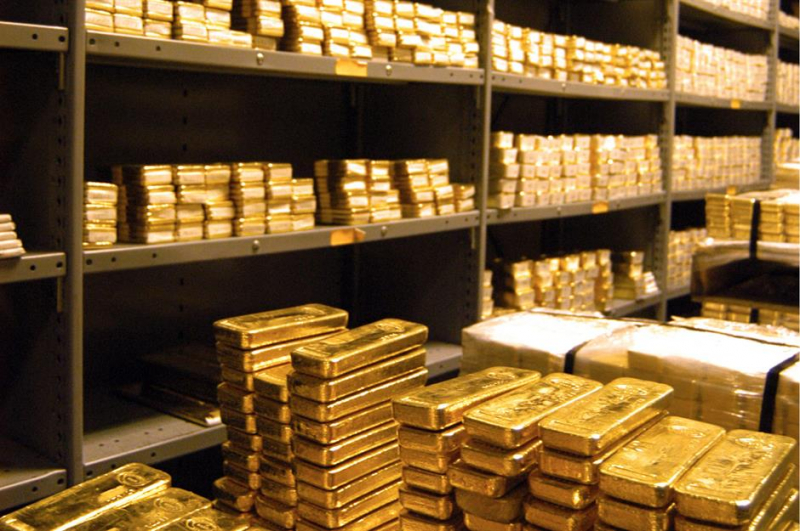
Photo: lovemoney 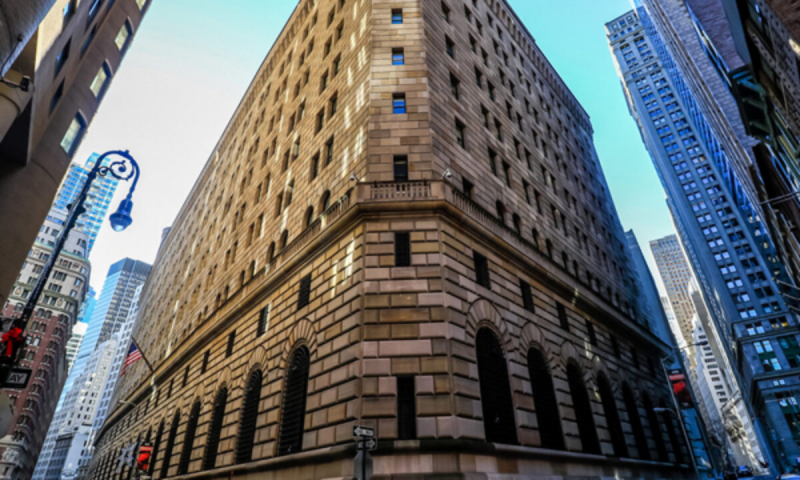
Photo: coingeek -
The finished Statue of Liberty is formally given to the American ambassador on July 4, 1884, in Paris as a celebration of the friendship between France and the United States. Millions of people visit this famous statue each year!
The statue's concept originated in 1865 when Édouard de Laboulaye, a French historian and abolitionist, suggested building a monument to mark the freeing of the country's slaves, the persistence of American democracy, and the forthcoming centennial of American independence (1876). A statue that sculptor Frédéric Auguste Bartholdi may have previously suggested for the opening of the Suez Canal was the inspiration for sketches of a large figure of a robed woman carrying a torch that he produced in 1870.
In France, construction on the statue, properly known as "Liberty Enlightening the World," started in 1875. The finished torch and left forearm were put on exhibit in Philadelphia and New York a year later to aid in American fundraising for the construction of the statue's enormous pedestal.
The Statue of Liberty was built in 1884 and measured little over 151 feet high. It was made of hammered copper sheets that were molded over a steel structure that engineer Gustave Eiffel, who joined the project in 1879, had developed. The statue was disassembled and sent to New York City, where it would be meticulously put back together, after being presented to Ambassador Levi Morton on July 4 of that year in Paris.More than 12 million immigrants entered the country between 1892 and 1954 thanks to the opening of the inspection facility on nearby Ellis Island six years later. Give me your tired, your hungry, your huddled masses yearning to breathe free," Emma Lazarus wrote in her poem "The New Colossus," which was penned in 1883 to gather money for the pedestal and later inscribed on a plaque at its foot. The Statue of Liberty waved her torch over them.
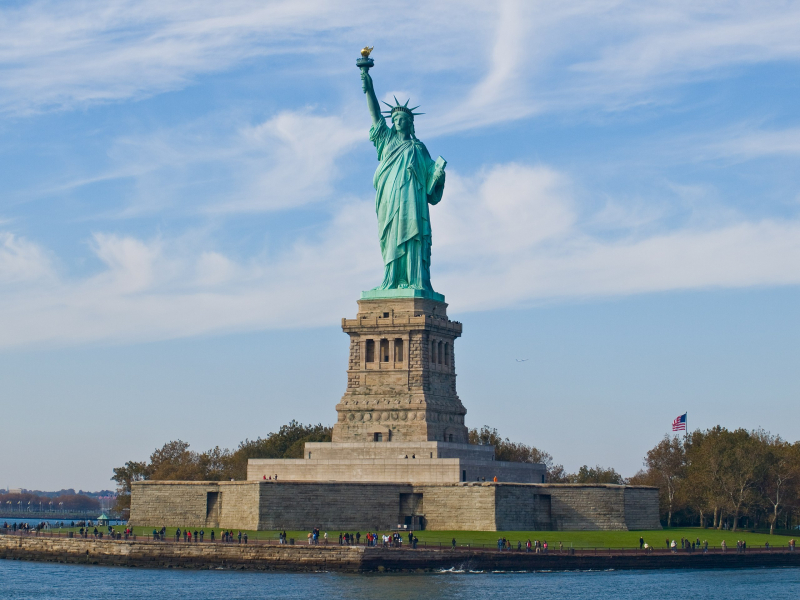
Photo: commons.wikimedia 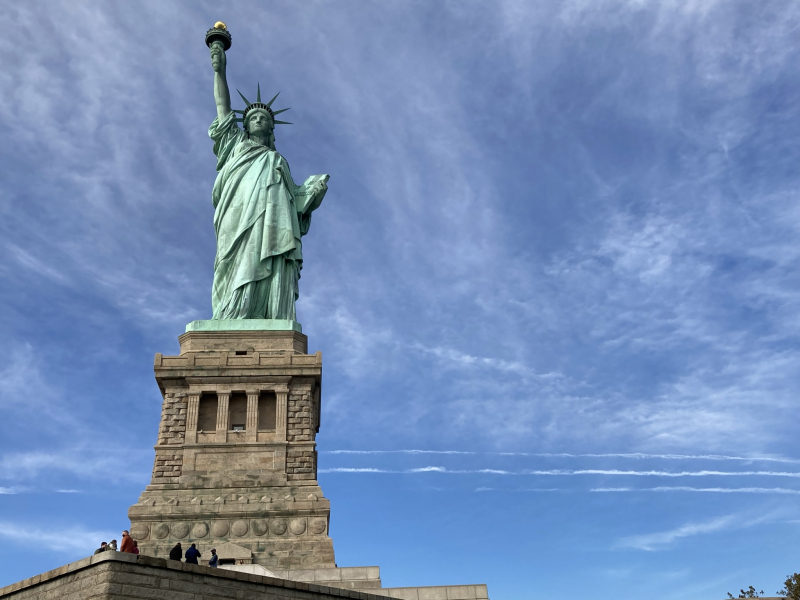
Photo: cleveland -
Midtown Manhattan, New York's Times Square is a significant commercial crossroads, a popular tourist destination, an entertainment hub, and a neighborhood. The intersection of 42nd Street, Broadway, and Seventh Avenue forms it. Times Square is a five-block area in the shape of a bowtie that extends from 42nd to 47th Streets, together with neighboring Duffy Square.
It is frequently referred to as "the Crossroads of the Universe," "the Center of the Universe," "the center of the Great White Way," and "the heart of the world" because of the countless billboards and commercials that brightly illuminate it. It is one of the busiest pedestrian zones in the world, the center of the Broadway Theater District, and a significant hub of the global entertainment sector. One of the most popular tourist destinations in the world, Times Square receives an estimated 50 million visitors each year. On its peak days, Times Square sees nearly 460,000 pedestrians, with an average of 330,000 daily visitors, many of whom are tourists.
One of the interesting facts about New York is The New York Times moved its offices to the then-newly constructed Times Building, today known as One Times Square, in 1904, changing the area's name from Longacre Square to Times Square. On December 31, 1907, the first New Year's Eve ball drop took place here, and it has since drawn over a million people to Times Square every year.
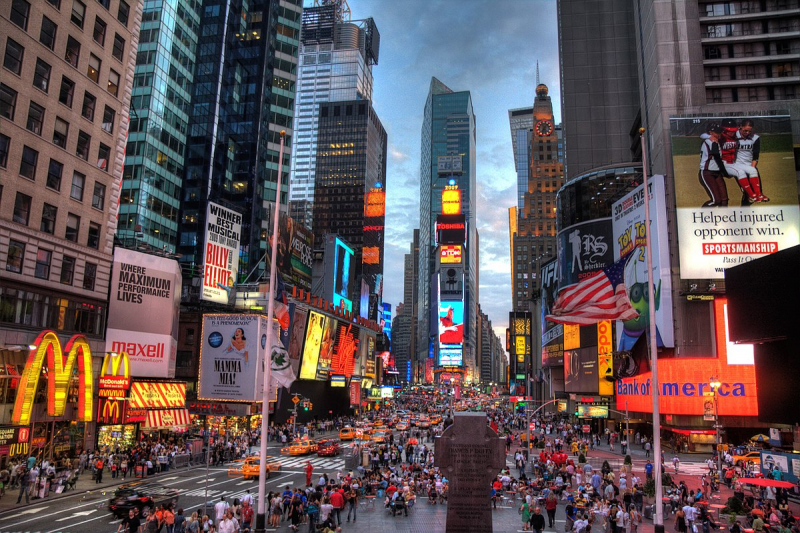
Photo: wikipedia 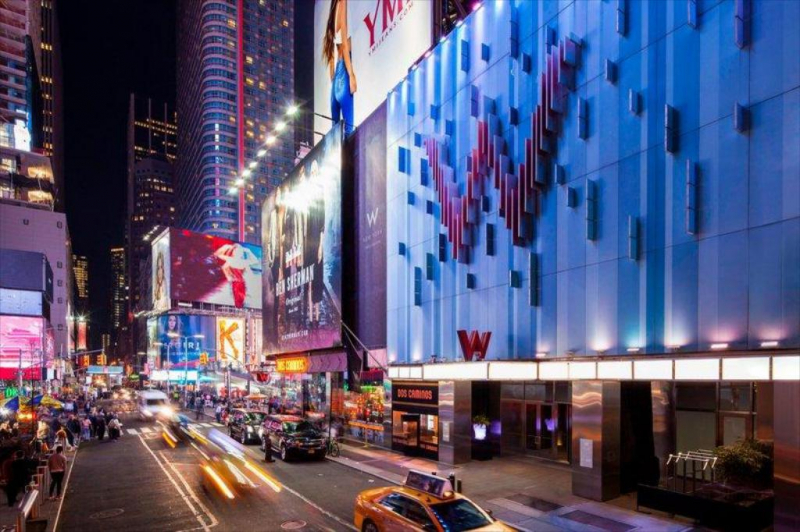
Photo: agoda































